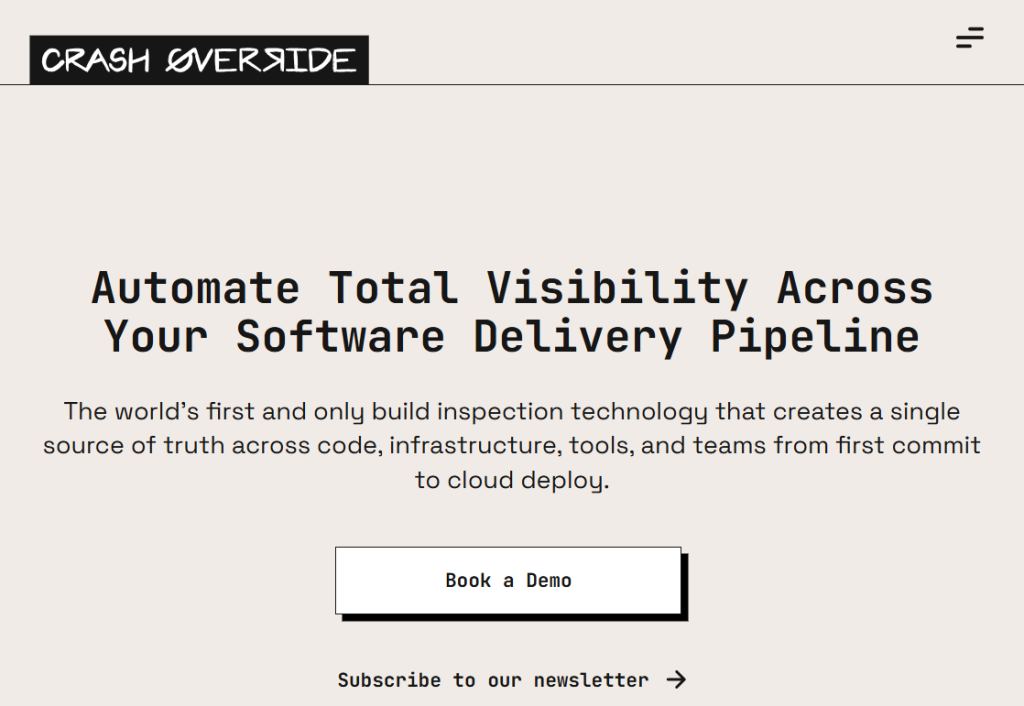Crash Override Raises $28M Seed to Reinvent Cybersecurity for the AI Age
July 28, 2025
byFenoms Start-Ups

Crash Override, a cutting-edge cybersecurity startup founded by John Viega, has raised a substantial $28 million seed round to combat the rising tide of AI-enabled threats across digital infrastructure. The round was led by GV (Google Ventures), with support from SYN Ventures, Blackstone Innovations Investments, and Bessemer Venture Partners - a strong signal of conviction from some of the most respected names in security and venture capital.
The funding marks one of the largest cybersecurity seed rounds in recent history, spotlighting how urgent and serious the threat landscape has become - and how differentiated Crash Override’s approach really is.
What Crash Override Is Building
At its core, Crash Override is building an autonomous threat suppression platform designed to detect and neutralize AI-driven threats in real time, with minimal human input.
Unlike traditional SIEM or XDR solutions that depend on post-event alerts and manual forensics, Crash Override deploys AI-native defensive models that can identify subtle anomalies, adversarial behaviors, and generative attack vectors as they unfold - and intervene automatically.
Key components include:
- Autonomous runtime defense layer that detects and neutralizes threats without human input
- LLM-agnostic security architecture, capable of handling attacks across GPT-based and open-source models
- Inference-level telemetry that monitors model behavior in production environments
- Integration across cloud-native, hybrid, and edge deployments
- Policy customization for data privacy, regulatory constraints, and vertical-specific threat models
This isn’t an evolution of antivirus. It’s a rethink of defensive infrastructure for a world where threat actors are using the same LLMs as security teams - and often moving faster.
Why This Changes the Game
Cybersecurity has long suffered from an asymmetry: attackers only need to succeed once. Defenders need to succeed every time.
But AI is deepening that gap. Adversaries now use LLMs to generate polymorphic malware, social engineering scripts, and deepfakes - scaling attack surface without scaling cost.
Crash Override flips this equation. By building security systems that can reason, adapt, and act in real time, it levels the playing field - or even tilts it back toward defenders.
One moment that resonated deeply with investors came when Viega described a customer use case:
“We intercepted an AI-generated attack that had no prior signature or known pattern - it was engineered to probe weak spots across a hybrid cloud infrastructure and escalate based on response latency. A traditional rules-based system wouldn’t have flagged it. Our system understood that the logic sequence itself was unnatural.”
What this revealed wasn’t just technical prowess - it highlighted a bigger shift founders should internalize:
Security is becoming behavioral. And systems that can't understand behavior in context will fall behind.
Many startups build point solutions to patch vulnerabilities. But in doing so, they anchor themselves to static threat models that age poorly. The real opportunity lies in building platforms that evolve with the threat surface, not behind it.
This is where many founders get stuck - they build too tightly to the present problem instead of designing for the dynamic nature of risk itself. Crash Override’s thesis? Don’t build walls. Build systems that learn to see when walls are being tested - and reconfigure themselves accordingly.
That mindset shift - from reactive to adaptive - is why this isn’t just another security platform. It’s infrastructure for the next threat epoch.
Why Top Investors Are Betting Big
This round wasn’t just about capital - it was about alignment with some of the smartest institutional minds in security and infrastructure:
- GV (Google Ventures): Backers of security powerhouses like CrowdStrike and Duo
- SYN Ventures: Deep cybersecurity roots, investing across defense, critical infrastructure, and zero trust
- Blackstone Innovations: Bringing not just money but enterprise-level customer access and operational expertise
- Bessemer Venture Partners: Long-term thinkers in enterprise SaaS and high-velocity scaling
Together, these firms offer more than checkbooks - they’re bringing strategic distribution, government access, and credibility in boardrooms where risk budgets are growing.
Founder Profile: John Viega
Viega isn’t new to this space. He previously served as CTO of security at McAfee and has authored multiple books on secure coding. He’s known for pushing the conversation forward - especially when it comes to reducing complexity in security tooling and rethinking risk posture in a cloud-native world.
This isn’t a “move fast and break things” founder. This is someone who understands that in cybersecurity, what you build matters less than what you miss - and he’s architected a company to build nothing that misses.
Industry Outlook: Cybersecurity in the Age of AI
Crash Override’s timing is sharp. The cybersecurity market is undergoing a foundational shift, driven by AI, cloud sprawl, and geopolitical risk. Consider:
- The global cybersecurity market is projected to reach $424 billion by 2030, growing at CAGR 12.3% (Grand View Research, 2024)
- AI-generated phishing and social engineering attacks increased by 189% year-over-year in 2023 (IBM X-Force)
- 90% of security professionals say their current stack isn’t equipped to handle adversarial AI (CSO Online, 2024)
- LLM-powered cyberattacks are expected to overtake ransomware as the top vector in 2025 (Gartner, 2024)
The gap is clear: current tools weren’t built to detect threats that learn. Enterprises are now actively budgeting for security platforms that can interpret intent, not just signatures or logs.
And here’s the kicker - governments and Fortune 500s alike are demanding real-time, autonomous intervention capabilities as part of new procurement standards. Crash Override isn’t selling fear. They’re selling readiness.
What’s Next for Crash Override
With $28M in fresh capital, Crash Override will focus on:
- Scaling R&D for deep LLM monitoring and threat inference
- Expanding go-to-market teams across defense, finance, and cloud infra verticals
- Building partnerships with cloud providers and AI model vendors
- Continuing to hire world-class security engineers and AI researchers
In a space that often rewards noise, Crash Override is winning with clarity: solve hard problems, learn fast, and don’t pretend that yesterday’s defense works for tomorrow’s war.









